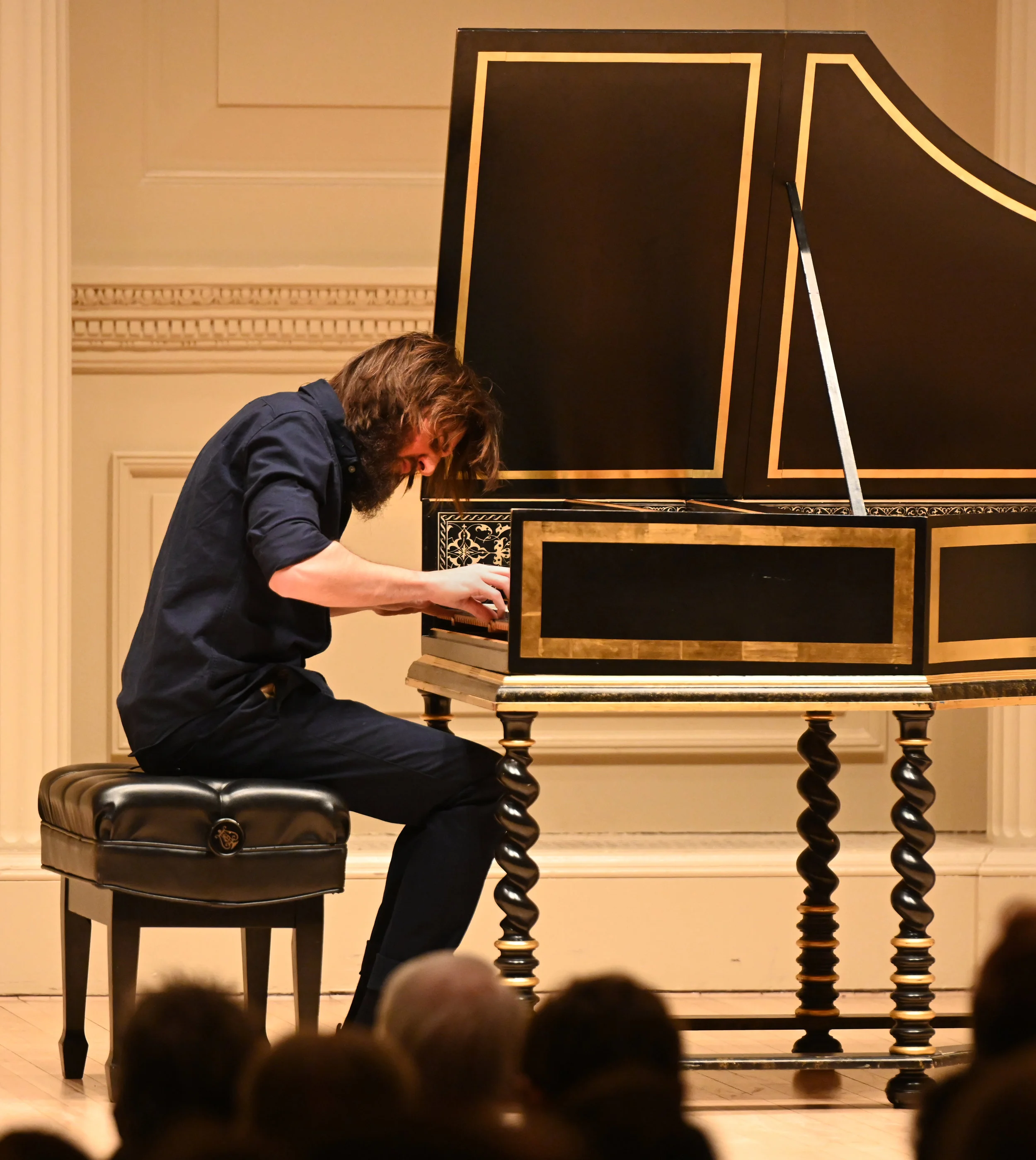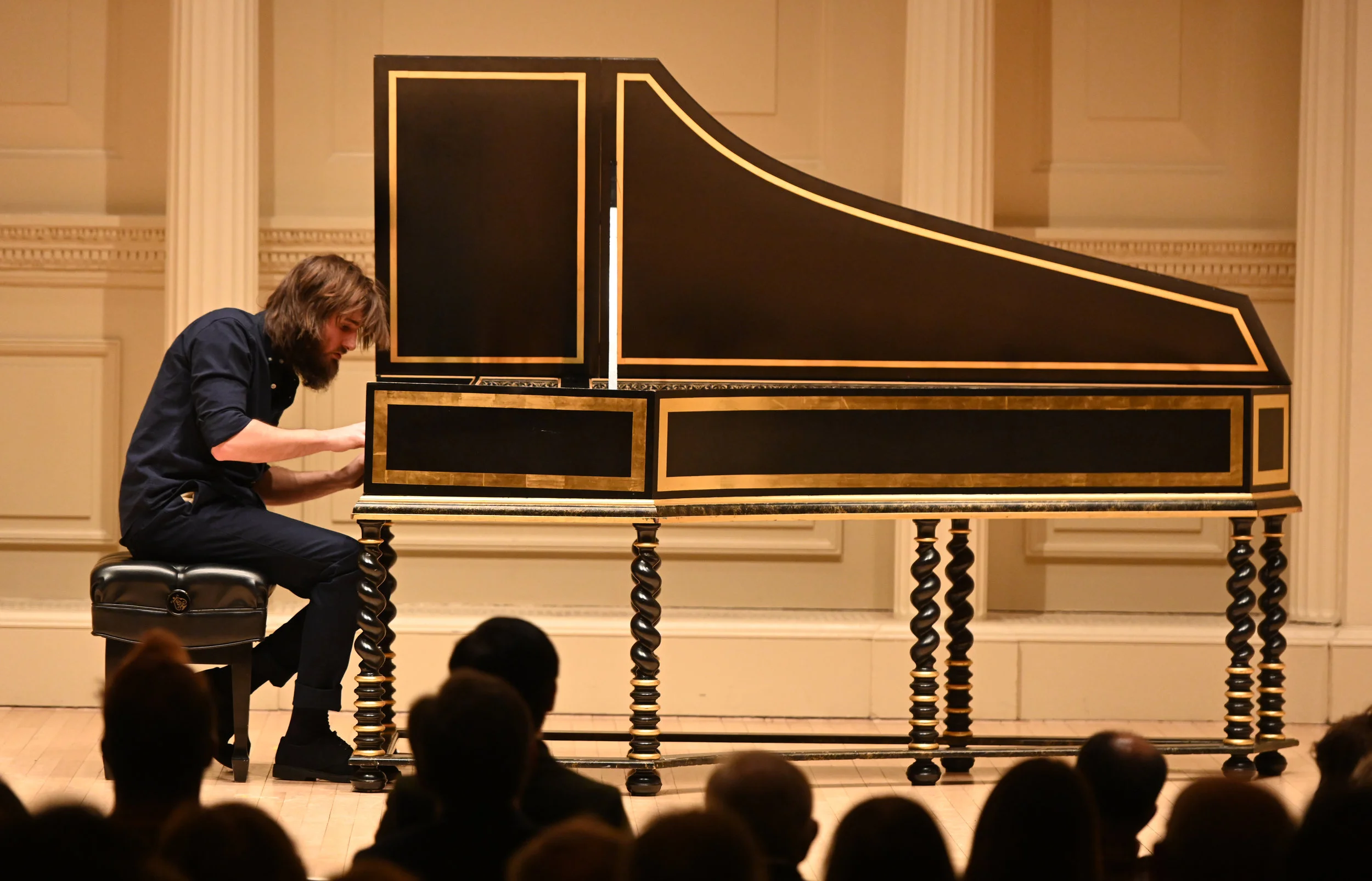REVIEW: Jean Rondeau's "Italian Recycling"
MARCH 8, 2019
BY BRIAN TAYLOR
The harpsichord, that antiquated predecessor of the piano, has a reputation for being a dry and crinkly instrument. The English conductor Sir Thomas Beecham famously described its sound as “two skeletons copulating on a tin roof in a thunderstorm.” Some may think of the harpsichord as unexpressive. But they would be wrong.
The very things that make the harpsichord more limited than the more evolved fortepiano — the keys do not respond to differences in velocity to create dynamics, and notes only sustain as long as the keys are depressed (there is no sustain pedal) — create a window, a necessity, for a much more deliberate approach to articulation and style to make the music come to life. The harpsichordist must be more creative, and more disciplined, than the pianist. Time, rather than volume and tone, is the harpsichordist’s tool for phrasing and expression.
Photos by Pete Checchia.
French superstar of the harpsichord world, hipster wunderkind Jean Rondeau, recently written about by Alex Ross in The New Yorker, appeared on Thursday in the intimate Weill Recital Hall in Carnegie Hall, with a program of J. S. Bach and Domenico Scarlatti called Italian Recycling, giving local audiences a chance to hear his spellbinding playing in person. His program contrasted the motoric, formalistic music of Bach — which he plays with high stakes and riveting drama — with an assortment of the relatively sensual and exotic single-movement sonatas of Scarlatti.
Rondeau creates such a wash of sound solely by overlapping notes carefully with his fingers, you would never know that the harpsichord lacks a sustain pedal. He makes the instrument more lyrical and sonorous, and the harmonies richer and more colorful, than expected. Each plucked note of the musical line dribbles from his fingers with a liquid viscosity, and the rhythm of the music lands like a plush pillow.
Photos by Pete Checchia
Rondeau’s trills and ornaments are like a life-force, surging with electricity, and quivering with expression. His Scarlatti is dazzling. He dives headfirst into the pure virtuosity of the faster selections, his right hand moving with the light quickness of a puttering bird. He also emphasizes the folkier, street-music strains in Scarlatti’s music, the exemplar of this being the rollicking Sonata in A Minor, K. 175, which has the crunch of guitars in cluster-like snapping chords.
The apex of the evening, thematically, was Rondeau’s luxuriant account of Bach’s Italian Concerto. He creates the illusion that we are listening to a full Baroque ensemble. Melodic strains flow forth from a different plane of consciousness than the driving basso continuo (the harmonized bass line), especially in the perky outer movements. In the mournful slow movement, the right hand’s singing melody had a wistful, improvisatory air.
He concluded the program with Bach’s Violin Chaconne in D Minor, as arranged for piano left hand by Brahms — but playing it on the harpsichord with two hands. Rondeau’s brilliance was evident as always, but since Brahms’s only contribution to Bach was purely idiomatic arranging for the left-hand, and adding pianistic dynamics and phrasing, I didn’t understand his choice to credit Brahms at all, in this instance.
Rondeau played two French works — his long standing specialty — for encores, Couperin’s beautiful "Les baricades mistérieuses" and Rameau’s dance-like "Les Sauvages.” In this wide ranging, yet cohesive, concert, Rondeau proved his mettle as one of the great interpreters of Baroque music on the stage today.
***







